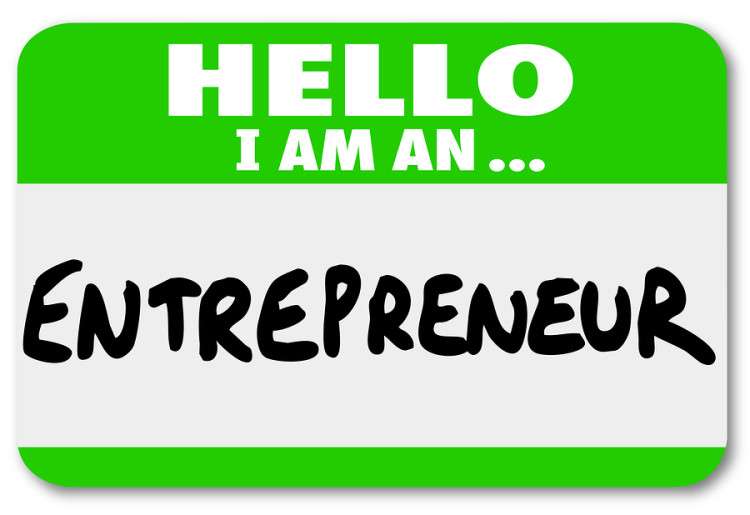TEEN ENTREPRENEUR: 4 Ways to Guide your Teenager to Success

by Christopher B. Fields
5 WAYS TO GUIDE YOUR TEENAGER TO SUCCESS
If we, as adults, could go back in time and alter our education or career path, I’m quite sure many of us would. You see, some of us are born as Natural Entrepreneurs, while the rest have to build this from scratch. However, the Department of Education is far more concerned about your child getting through high school, than they are about the success of their career.
Not all individuals are cut out to be entrepreneurs, and rightfully so, while others are simply addicted to the lifestyle. It just isn’t made for everyone, because each person is unique. Though, I believe there are some necessary entrepreneurial development skills that are beneficial to all people, regardless of their path in life. As you probably know, it’s better to start sooner than later when it comes to implementing patterns and direction of success.
I have thrown together a few simple, yet effective, techniques to motivate your teens into understand basic business philosophy.
- HOBBY ANALYSIS
Just as every teaching moment you have with a child, it starts with a simple conversation. In our Hobby Analysis, our goal is to break apart your teen’s favorite hobby. We’re going to change their perception of that hobby from “tunnel vision” to “peripheral”. We need to to visually see the landscape of all moving parts involved within their hobby. You want your teen to focus on how many services it takes to create that ONE ACTION, and discuss the basics of how everything works. This will open up a better sensory awareness for business and economics, and can easily open the door to new interests that motivate your teenager.
Here’s an example;
Let’s dissect a teenager that is heavily involved in GAMING.
Let’s use a single game for this example.
-How is their favorite game making profit? Is it free, and makes money from advertising? Does it require a subscription?
-Do some basic math with them. If there are 1 million users for this game, and each pay approximately 50 dollars, that’s roughly 50 million dollars.
-What are the costs?
-Does the game owe royalties to the gaming console, or is it the other way around?
-How much revenue in taxes will be sent to the I.R.S.? How much money is left?
-How many employees do you think this gaming company has?
-Let’s estimate how much money it requires to employ all of these people.
-Insurances?
-How much do Game Designers make? Is it a high-paying career? What are the prerequisites to becoming a Game Designer?
-Who prints each Compact Disc?
-Which stores carry this game?
-How much profit does each store make from selling this game? This takes away from the profit margin.
-How much advertising does this company spend in a year?
-Which types of advertising do they pursue? Which do you think is more effective?
I’m sure you get the point by now. We’re simply breaking apart every possible aspect of this one game. We’re showing them how the companies goal is REVENUE, and how that revenue is split up among services and expenses.
Not only are we showing them how a basic process works for something as simple as a game, but we’re also opening doors on other topics your teenager may be interested in. Maybe they discovered that they like the art of Game Marketing. The possibilities are limitless. Nevertheless, you will widen the scope of their vision and understanding.
- LITERACY DEVELOPMENT
I am a very big advocate of literacy. I believe that being able to read and write well is heavily monitored by society and our peers, and creates an impression of our education level. Mastering good writing can turn an F-grade student into an A-grade professional. As they say, “fake it until you make it”.
Being perceived as a literary scholar in your reports, letters, and emails will encourage readers to perceive you as smart or very analytical. Good writing is imperative to be successful in this world.
With great writing, comes great vocabulary. If you want others to believe you’re smart, you surely better sound like it. Aside from proper grammar, it’s helpful to know a variety of intellectual-type words.
What’s the best way to accomplish this? SIMPLE!
Pick up a dictionary and start reading. Yes, it’s really as simple as that. So, allot about (30) minutes or so each day to reading the dictionary. Our goal is to push those words from our Working Memory to our Long Term Memory, in order to quickly recall them in the future. Repetition is key!
Next, we’ll need to tune up those writing skills. This one can be tougher, however, it’s quite simple if you just stick to the basics.
First we need to mirror other great writers. How do they write? What type of wording do they use? Most importantly, HOW and WHERE do they transition in their pieces.
Simply inspecting articles from others will build writing patterns in your mind. Repetition is key!
Now, just like anything, we’re going to need to perfect each piece. The best way to do this is to write something, then go over it 5-10 times. Most of the time, you’ll find at least one word or letter that needs to be changed. All this requires is that you read each sentence, and ask, “can I make this sound better”?
If you can, do it!
Repetition, repetition, repetition!
- ARGUMENT EXAMINATION
Next, we will go over Argument Examination which has very little to do with arguments, and is more focused on Perceptual Awareness and Conflict Resolution.
Disagreements are inevitable, but how you perceive them and deal with them depends on you.
- Let’s start by locating a basic argument on television or the internet. A simple search on YouTube will quickly reveal a few videos to use for this exercise.
- Have your teenager view the video.
- Ask them which party they believe is correct in the argument, then ask them why they believe that.
- Now have them describe one of the individuals in the argument.
Let’s ask questions like;
Why are they arguing that position?
What type of mood are they in?
Did anything significant happen to that person that day?
Do they have any family or home issues currently going on in their life?
What type of household were they raised in?
Of course, your child will not know all of these answers, but we only want them to CONSIDER the questions for their conclusion.
- Repeat Task #4 for the second person.
- Now, have your teenager argue BOTH sides as if they’re trying to win the argument in a court of law. What is their reasoning? What are their excuses?
- After arguing both sides, ask them what has changed in their belief?
Do they agree with their initial conclusion?
Do they have more compassion for the person that was wrongfully arguing?
Were either one of these individuals wrong for stating their position?
Here, we’re simply pulling every aspect of the argument apart. This is because it’s important to understand every angle of a disagreement, why it is caused, and what is the reasoning.
The quicker we can understand all sides of a conflict, the quicker we can resolve it.
- CAREER GUIDANCE TOOL
Our last exercise is a fun, effective, and builds the creative mind. Here’s a neat tool that will encourage your teenager to discover new careers and most importantly, new passions.
From Kindergarten and through our college years, we’re taught to pursue a handful of widely known careers, like; Doctor, Nurse, Lawyer, Police Officer, etc.
Nothing is wrong with choosing one of those careers, however, there are many more “behind the scene” services that support all of these primary career fields. Many that are unknown to the general public are actually GOLDMINES, and your child may find that one of these unknown careers are a lot more fitting for their personality.
Let start on pulling these apart.
- Let’s list TWO close passions that your child enjoys.
Example; Basketball, Designer Clothes, Gaming, Exercising, etc.
- Now, let’s physically draw TWO circles onto a sheet of paper. Write down one passion inside of each circle. You should now have a piece of paper with two circles. Both circles should have one of the two passions that your child has chosen, inside.
- What we’ll do next is draw FIVE LINES coming from EACH circle.
- For each line, I want you to list a career or service that is tied to your primary passion.
Here are a few examples;
BASKETBALL
-Basketball Coach
-Personal Trainer
-Sports Gear Salesperson
-Advertisement Design
-TV Camera Operator
EXERCISING
-Gym Equipment Salesperson
-Fitness coach
-Health Supplement Salesperson
-Gym Operator
-Athletic Shoe Designers
Of course, this process can go on and on, forever. The point is to be able to see beyond their initial perception. We’re helping your teen think outside of the box to discover their PERFECT career.
In addition, do your own research. Look up careers related to one of these topics and I assure you, you’ll find some that you never knew existed. These unknown professional services are for individuals that know EXACTLY what they’re seeking in life. Push your teenager to find that!
IN SUMMARY, there are many techniques and instructional videos that can push your teen to be the BEST VERSION of their SELF. The methods listed above are only four that I designed to be attractive to the teen mindset, build creativity, and employ a domino effect for their perception in the future.
Christopher B. Fields
Savannah NLP
www.SavannahNLP.com
Christopher Fields holds a Master Certification in NLP. Mr. Fields is the Lead Instructor and Operator of Savannah Georgia’s primary learning center for Neuro-linguistic Programming. Chris has held the position of Certified International Investigator (CII) with the Council of International Investigators, a Certified Lean Six Sigma Black Belt with The Council for Six Sigma Certification (CSSC), and currently holds an active Private Investigation license with GBPDSA.
Christopher Fields
www.SavannahNLP.comArticle source: http://articlebiz.com







No Comment